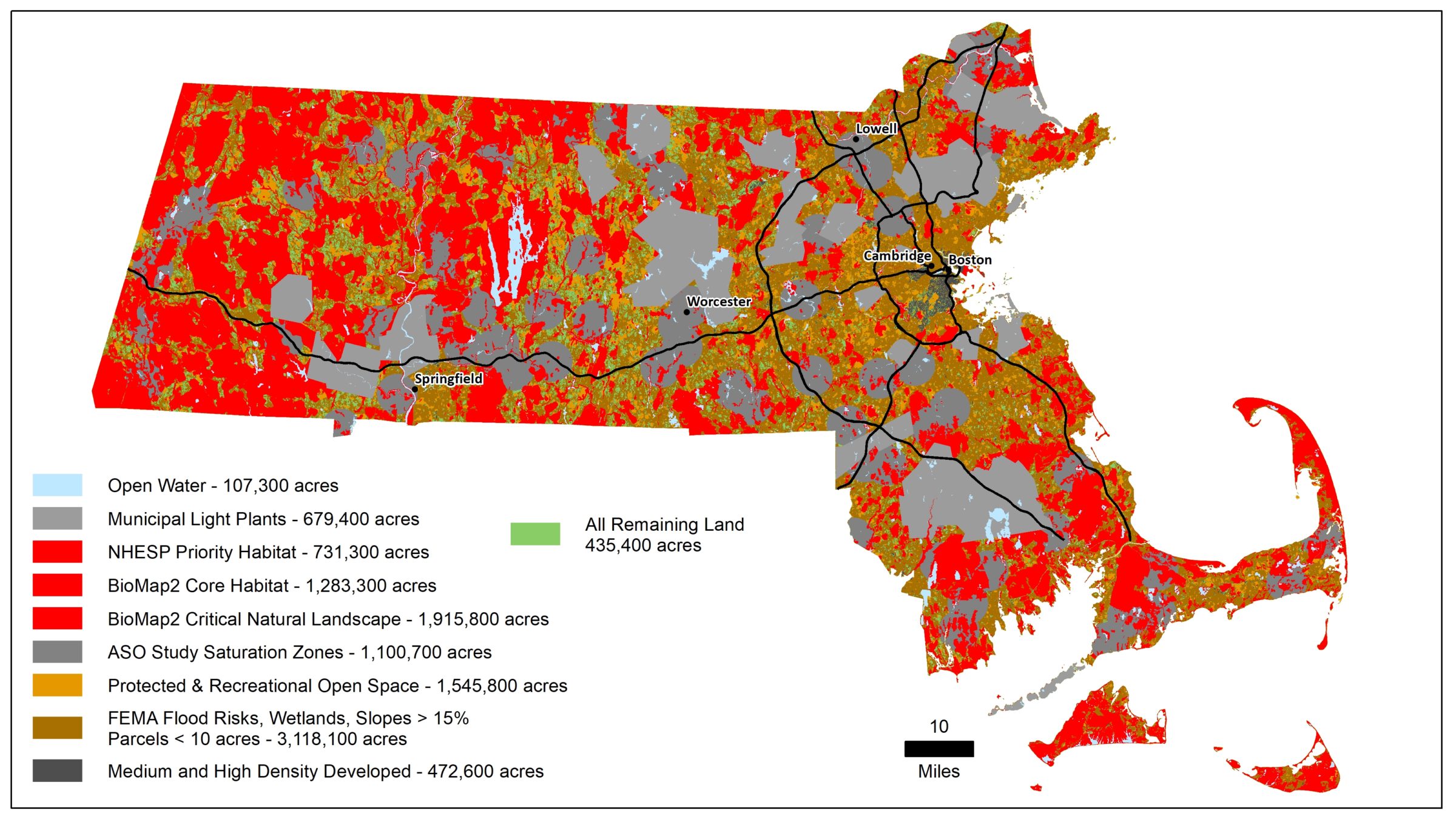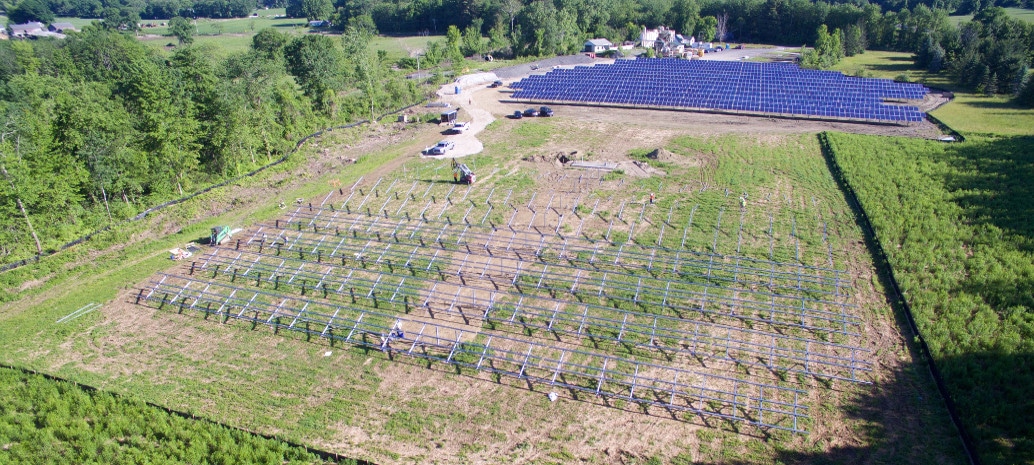While the administration of Massachusetts Gov. Charlie Baker was lauded back in April for enacting emergency regulations doubling the size of the Solar Massachusetts Renewable Target Program (SMART) to 3.2 GW in capacity, some concerned parties claim the new regulations may unintentionally grind the state’s solar market to a halt.
The concerns over the new regulations have to do with the Department of Energy Resources’ (DOER) use of Geographic Information Systems (GIS) imaging to determine viable project locations. GIS imaging takes a set area, divides said area into a grid and compiles aerial photos, satellite images, thermal images, digital elevation models, scanned maps and other data to assign each grid section a numeric value. This value represents that area’s potential.
However, according to research and testimony from Borrego Solar and the Coalition for Community Solar Access (CCSA), the parties claim that land-use regulations developed under this imaging would put as much as 90% of the state off-limits to community-scale solar developments.
“We were pretty surprised to see these new restrictions come out,”said vice president of policy and strategy at Borrego Solar, Ilan Gutherz. “They rolled out the proposal about nine months prior, but none of these new land use restrictions were in that proposal.”

What’s more is that time is running out for amendments to be made regarding the emergency regulations. After the rollout, the regulations became subject to a 90-day review period. That period is set to end in the middle of July.
Industry impact
This is especially troubling for Borrego, on of the largest developers in Massachusetts, as Gutherz shared with pv magazine that the current regulations would force the company to cancel up to 80% of its Massachusetts pipeline.
“That’s a pretty massive hit to our business and I think we’re scratching our heads a little bit, trying to understand whether DOER meant to have that kind of impact on the industry, essentially shutting down the large-scale ground-mounted solar industry in Massachusetts, or whether they were trying to do something else,” said Gutherz.
The regulation would also lead to further job loss in Massachusetts’ solar industry, an industry that has been one of the hardest-hit by Covid-19. CCSA has 80 solar energy projects that are set to be canceled if the regulations go forth as-is. This is especially worrisome, as the emergency regulations were enacted in order to breathe life into the industry.
“The industry in Massachusetts was already struggling with job losses because of Covid: half of the workforce is expected to be wiped out by the end of June,” CCSA Northeast Director, Erika Niedowski, told pv magazine. “On top of that, these regulations will bring additional job losses of at least 1,500 this year. That translates into lost tax revenue from municipalities from pilots. We see these projects as being key in order to revive the Covid-battered Massachusetts economy.”
Beyond solar
It’s not just the solar industry that could be shaken by these regulations. The emergency regulations also stipulate that any project above 500 kW must also include energy storage. Without viable land to develop the projects that would facilitate this growth in large-scale storage, that industry would stagnate as well. Gutherz shared that every Borrego project that would be canceled do to the restrictions would also represent a lost storage project.
Beyond the companies that rely on SMART to provide a project pipeline, the new regulations have essentially devalued large swaths of the state’s land. Any landowner, especially farmers who have historically leased land to solar developers, has now lost that option for income. So too have municipalities who have turned to solar in order to meet climate change and carbon-reduction goals, as well as to generate revenue.
CCSA has also provided a look into what some Massachusetts counties are set to lose:
- Plymouth County – 23 projects totaling 107 MW, including one project that will cost the host municipality $1.8MM in lost tax revenue over 20 years
- Bristol County – 15 projects totaling 106 MW in Bristol County, with total lost tax revenue to host municipalities of $26.7M
- Worcester County – 14 projects totaling 90 MW, including one that will cost the host municipality $1M in lost tax revenue
- Franklin County – 7 projects totaling 61 MW
- Hampden County – 7 projects totaling 41 MW
Since the announcement, hundreds of responses have been filed by solar companies, land owners and local politicians alike calling for review and amendment of the land-use restrictions. Collectively, these concerned parties seem to agree that the restrictions were not put in place by DOER maliciously, but rather that, at the time of announcement, DOER didn’t know the full effect that the restrictions would have on solar development.
“It’s certainly possible that DOER did this without fully understanding the effect,” said Gutherz. “Unfortunately, they did it in a way that puts us on a very tight timeline to change this.”
It is this unified voice, coupled with the belief that the restrictions are not an act of malice, that gives Borrego and CCSA hope that the restrictions will be reevaluated and amended before that July deadline.
This content is protected by copyright and may not be reused. If you want to cooperate with us and would like to reuse some of our content, please contact: editors@pv-magazine.com.









By submitting this form you agree to pv magazine using your data for the purposes of publishing your comment.
Your personal data will only be disclosed or otherwise transmitted to third parties for the purposes of spam filtering or if this is necessary for technical maintenance of the website. Any other transfer to third parties will not take place unless this is justified on the basis of applicable data protection regulations or if pv magazine is legally obliged to do so.
You may revoke this consent at any time with effect for the future, in which case your personal data will be deleted immediately. Otherwise, your data will be deleted if pv magazine has processed your request or the purpose of data storage is fulfilled.
Further information on data privacy can be found in our Data Protection Policy.